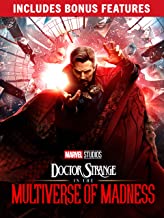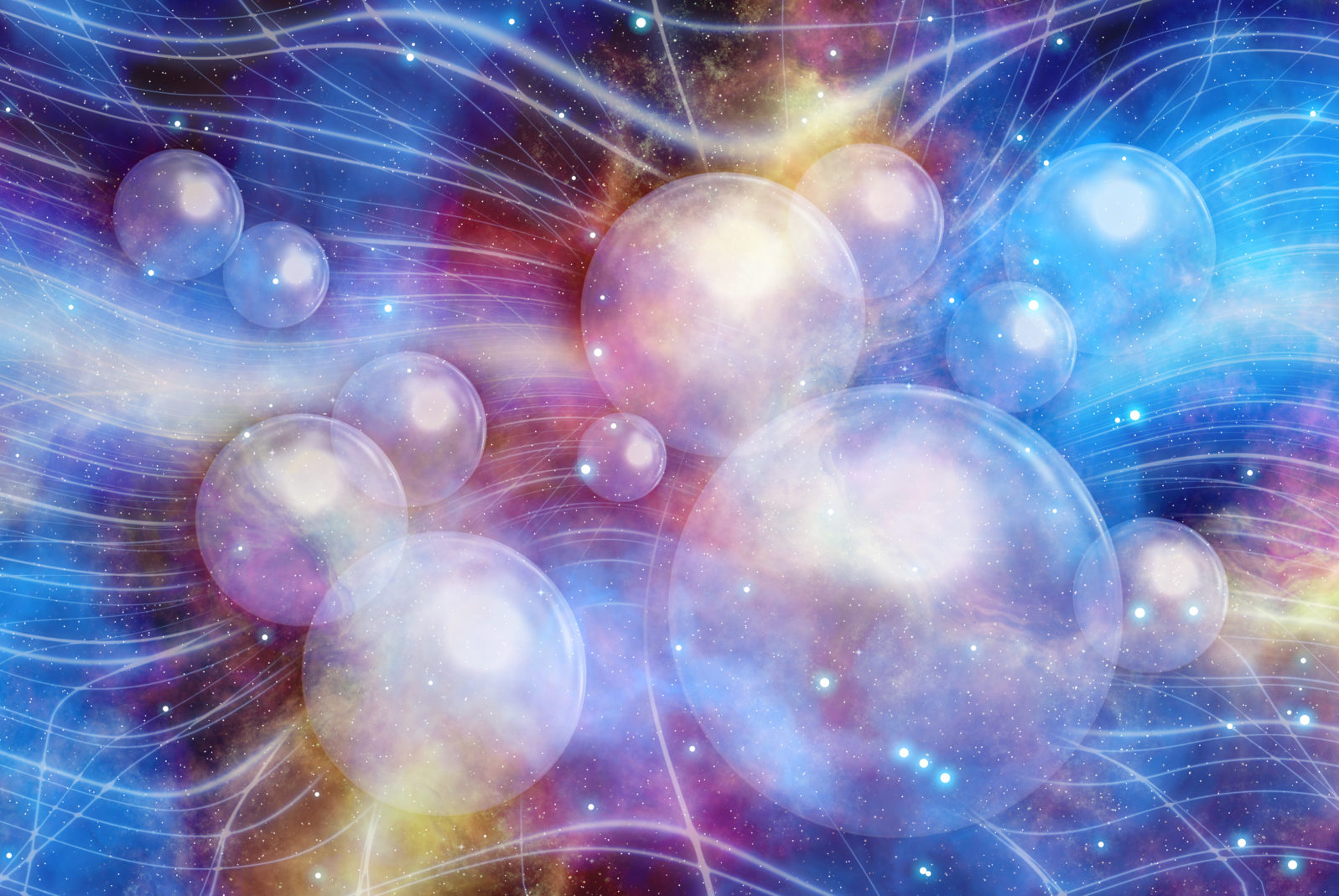Dr. Strange’s Multiverse of Madness Features Infinite Problems
The extensive edits to Sam Rami’s work as a director have left it riddled with plot holes and inconsistenciesIn my review last week, I ranted about the multiverse as a concept in storytelling, and how the Mouse has used it an excuse to turn Wanda Maximoff into a sorry shadow of her former self. If I could describe the problems overall with the movie in one word, that word would be laziness. The multiverse is used as an excuse for all kinds of incoherent nonsense.

Before going into detail, it is important to note that Multiverse of Madness (2022) went through massive reshoots before its release. Film aficionados have said that, while there are hints of Sam Rami’s directing style, they were very few in number and it is evident that the edits to the film were extensive. Sam Rami directed movies such as the original Spider Man Trilogy (2002–2007) and The Evil Dead, so his experience with Marvel movies and horror made him ideal for this film. The darker scenes in the movie are obviously his work but it’s unclear if the bulk of the film was really his original vision.
Of course, there is an official narrative that the reshoots were used to clear up the clutter of the film. To be candid, I don’t believe it for a second. For one thing, this film is so incoherent that, if anything, they cut out too much because it’s difficult to follow what’s going on. For another thing, cutting the fat of a film doesn’t usually require an extensive reshoot — and we know that the reshoots to this film were anything but sparing. In fact, it’s been said jokingly that Benedict Cumberbatch, the actor who played Dr. Strange, isn’t even sure if he’s in the movie. To put it plainly, these reshoots scream studio interference. Given the quality of this film, that theory makes way too much sense.
I don’t think I’ve ever seen a movie so saturated with stupidity. I’m not being hyperbolic when I say every single scene — I mean all of them — is riddled with plot holes and inconsistencies. It’s the kind of movie where one gets this vague nausea because the inconsistencies happen so fast. Your brain is catching them, but you can’t entirely register what you’re seeing. In the words of Harry Plinkett, a character created by the YouTube channel Red Letter Media, “You may not have noticed, but your brain did.”
All that said, let’s begin with Scene 1. An alternate version of Dr. Strange, referred to as Defender Strange, is running through an unknown universe with a girl named America Chavez. They are being chased by a monster as they try to reach a glowing book, called the Book of the Vishanti.
Now, right away one can tell there is something off. The first lines are in Spanish — but then none of the other lines are. Why? Throughout the rest of the film, the characters express surprise in other languages but they never again switch over to full sentences in Spanish. This makes no sense; it was jarring to the ears and instantly took me out of the scene.
Anyway, just as they reach the end of a narrow runway, just out of reach of the Book, the monster cuts them off. Defender Strange begins to fight the monster but is stabbed in the leg. and The monster’s tentacles are venomous so Strange instantly weakens and understands that he is dying. He tries to contain the monster with a spell. I should pause here to mention, it seems that Defender Strange’s power are slightly different from those of his alternate, Dr. Strange. But that’s never accounted for and the oversight becomes an issue later in the story.
As Defender Strange tries to contain the monster, he realizes that his spell is going to fail. He looks at America and says he must take her powers even though that will kill her. The monster can’t be allowed to have her powers because they are too dangerous. We’ll get to the problems this turn of the story raises in a second; for now, let’s finish the scene.
America is upset by this news, but can’t really do anything. Then, as Defender Strange is draining her powers, the monster breaks out and stabs him. America uses this opportunity to make a break for the magic Book. She reaches the Book but the monster grabs her. She panics and… it turns out that her power is to create portals to other universes.
A star-shaped portal appears behind her and Defender Strange, with his dying breath, cuts her free of the monster’s tentacles. Then Defender Strange and America are sucked into the portal.
Here it is again:
Now, let’s break down everything that’s wrong with this scene. First of all, we have to explain something about America Chavez. She is the only one in the entire multiverse with the power to create portals to different universes.
Question One: How does Defender Strange know he can drain her powers?
Two: How does he know he can use them?
Three: How does he know the monster can use them?
Four: Why is it better for him to have the powers when he is already dying because he couldn’t beat the monster? The monster will just take the powers from him!
Five: It’s established later that it takes forever to drain America’s powers. We’re talking around an hour, maybe more. It’s never specified but, at one point in the movie, people have time to cross an entire city before she’s drained of her power. So, it would’ve been faster for her to grab the book, give it to Defender Strange, and have him find the spell to beat the monster. For all we know, he could’ve had time read the whole thing!

Six: It’s shown later in the movie that Defender Strange’s corpse has a sling ring, which helps sorcerers make portals as well. These portals don’t travel to other universes but they can take people to places other than their current location. So why didn’t he make a portal and teleport her back to his home, or . . . I don’t know . . . anywhere else!
You would think some of these details would be explained later but they’re not.
Anyway, the next scene is Dr. Strange waking up in his bed after having dreamed this entire battle with the Monster as “Defender Strange” — because, as the movie later explains, dreams are actually the experiences of an alternate self somewhere in the multiverse.
Stop and think about that. Every time you dream, you’re living the life of another you. I can’t speak for your dreams, but for me, that is… unfortunate.
But there is a bright side. Somewhere in the multiverse, I’m a pirate!
We’ll pick this theme up in the next review.
Here are all the portions of my my extended review of Dr. Strange in the Multiverse of Madness:
Can the multiverse really work as a plot device? That’s a question Dr. Strange in the Multiverse of Madness begs us to ask though but the screenwriters’ answer might be disturbing. Just bringing back characters who died “in another universe” for the sake of a sequel, for example, insults the viewer’s emotional intelligence.
Multiverse of Madness features infinite problems. The extensive edits to Sam Rami’s work as a director have left it riddled with plot holes and inconsistencies. If I could describe the problems in one word, that word would be “laziness.” The multiverse provides an excuse for all kinds of incoherent nonsense.
Do life history or moral choices matter in a multiverse? In this third part of my extended review of Multiverse of Madness, I look at how characters suddenly alter with no accounting. The cinematography is fine but what has happened to Doctor Strange’s earlier powers? And why has Wanda morphed from a complex figure into an arch-villainess?
The only mad people in Dr. Strange’s multiverse are the writers. We don’t know why Wanda has morphed into a villain or why good and evil have become morally equivalent. I don’t know who gave the Mouse its moral compass, but it seriously needs to re-evaluate the ethics that underlie story developments covered here.
Marvel Universe: Being all powerful, it turns out, is very boring The Mirror Dimension in Multiverse of Madness dispenses with sharp intellectual conflict, opting for unexplained power plays instead. In the siege of Kamar-Taj, the superheroes break the rule that they have only SPECIFIC superpowers and weaknesses. That rule is what creates story excitement.
Dr. Strange finds a universe almost like the one he left… But, like Schrödinger’s famous Cat, he is alive in one universe and dead in another. Wanda Maximoff will stop at nothing to capture America Chavez and her powers — but having several universes to dominate does complicate things.
Multiverse of Madness skirts the edges of story collapse. Oh well, it IS a multiverse, so maybe, in this reality, all the heroes stink. The final conflict between Wanda and Professor X enraged fans because… it was zilch. At least now we don’t need to look up “anticlimax” in a dictionary.
It’s the end of the Multiverse — and yet no one is in a hurry? Until close to the end, everyone continues to behave as if previous events and circumstances have no consequences and vital information is optional. Close to the end we come across a very sad scene that is so well acted that one almost forgets all the nonsense it took to get the viewer to this point.
and
Multiverse of Madness?: It’s a letdown for the Marvel Universe. I can’t really recommend it because spectacle trumps any sense of the story hanging together and we can infer nothing from past events. Whether the high level of incoherence is inevitable in a multiverse setting or a result of the Mouse’s control — I prefer to remember past classics fondly.
You may also wish to see my review of Transcendence (2014): here and here.
Also, my series on Firefly, the TV series and the film: Firefly: Can science fiction reimagined as the Wild West work? I strongly recommend the original 2002–2003 series for its careful development of the culture that grows up around world-building (terraforming). Firefly is an impressive blend of the future and the past and, if Disney+ carries through with its threat of a remake, be sure to see the original. All parts linked at here.
